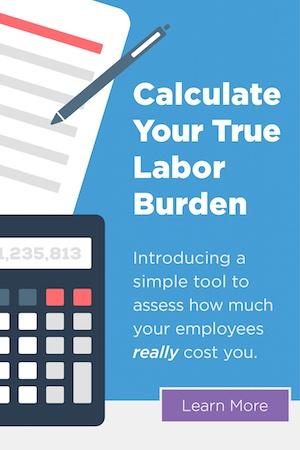Health care is expensive for businesses. Those who go through insurance companies must deal with rising premiums and growing uncertainty. And the ones that self-fund health benefits are only so insulated from increasing costs. In the search to buttress the bottom line, corporate wellness programs are doing a good job of improving worker health so that costs are eliminated before they occur.
For HR managers in charge of running wellness programs, returns can be difficult to show. That’s because wellness initiatives are a complex investment requiring patience, leadership and up-front costs all before measurable results occur.
The Baked-In Difficulty of Proving Corporate Wellness Returns
There’s always the person who didn’t know there was something wrong with his health until it was too late to get early treatment, and he’s the one who costs businesses the most money on health care, according to Denise Holland, a speaker at the 7th AnnualEmployer Healthcare & Benefits Conference.
Following the introduction of a wellness program, the business cost of maintaining a healthy workforce should drop. This can be difficult for HR managers to prove. Problems measuring returns on corporate wellness programs arise from a lack of accurate reporting, according to Holland. Although health indicators and expense outlays are measurable, the connection between the two is murkier.
Taking employee biometric readings is time-consuming and expensive. By contrast, the insurance premiums and out-of-pocket costs recouped when, say, an employee receives an early heart disease diagnosis are less measurable. All of which can lead management to abandon wellness programs that fail to make lines jump on company balance sheets.
Meet Your Non-monetary Wellness Goals Before Proving ROI
Risk assessments and health screenings are the foundation of any wellness program. By documenting employee habits and vital signs, a business can gauge the health risk of its entire staff, giving it increased bargaining power with insurance companies and a baseline from which to launch its own health improvement initiatives.
RELATED: You’re Not Crazy to Self-Fund Your Health Care Benefits
Tying wellness program success to lower health expenditures is like measuring the strength of an investment by counting how money much is put into it. Wellness programs, like market investments, take time to pay out, and returns aren’t so much shown as they are assumed.
When money going out can’t be accurately tied to money coming back in, few can blame a CFO for being skeptical. In its first few years, however, the value of a wellness program is best shown by meeting goals tied to workforce biometrics and other positive externalities, such as:
 The improvement of a measurable health indicator across the entire staff; e.g. lower blood pressure, cholesterol or resting heart rate.
The improvement of a measurable health indicator across the entire staff; e.g. lower blood pressure, cholesterol or resting heart rate. An improvement in employee morale, productivity or performance.
An improvement in employee morale, productivity or performance. Participation in workplace wellness activities.
Participation in workplace wellness activities.
It’s Management’s Job to Provide Corporate Wellness Incentives
Perhaps the best way to convince upper management of the value of wellness is to get them to begin promoting the organization’s initiatives. Company culture starts at the top, and so the uptake of a health program amongst staffers largely depends on the engagement of the C-suite and others in senior positions.
Culture is what separates a useful wellness program from those that increase health expenses, hurt productivity and lower morale. A wellness culture is unlikely to succeed that offers no incentives for health improvement, punishes unhealthy employees, lacks management buy-in, and fails to set and measure realistic goals.
If only one-third of employees participate, then positive results will be difficult to show no matter how good a program is. Although the thought of offering health-based incentives may cause CFOs to cringe, doing so increases program participation by an average of 70 percent, said Holland. Some common types of incentives include:
 Gymnasium or diet plan reimbursement.
Gymnasium or diet plan reimbursement. Weight-loss or biometric improvement competitions.
Weight-loss or biometric improvement competitions. Walking, yoga or other exercise programs.
Walking, yoga or other exercise programs. Rewards for obtaining physicals and preventative care.
Rewards for obtaining physicals and preventative care. Healthy company-sponsored snacks and lunches.
Healthy company-sponsored snacks and lunches.
RELATED: 10 Strangely Useful Workplace Wellness Technologies
Wellness Returns Depend on What You’re Looking for
Once a wellness program is established, returns — cost savings less the price of the program — are usually measurable within three to five years. Return on investment, therefore, depends upon how “cost savings” is measured. A definition that looks only at claims data misses much of the value the program brings to the workplace in the form of employee positivity, productivity and retention.
On the issue of health care, business and employee goals are for once in perfect alignment. Trimming the fat on a corporate level requires doing the same on a more personal one.
If you found this article helpful, may we suggest:
 For more on saving money on health care costs, read Avoid the Cadillac Tax by Adopting Voluntary Benefits.
For more on saving money on health care costs, read Avoid the Cadillac Tax by Adopting Voluntary Benefits. For more on improving company culture, read Employee Training Considerations to Help Businesses Thrive.
For more on improving company culture, read Employee Training Considerations to Help Businesses Thrive. For more on employee retention, read Strategies to Improve Your Business Through Exit Interviews.
For more on employee retention, read Strategies to Improve Your Business Through Exit Interviews.


